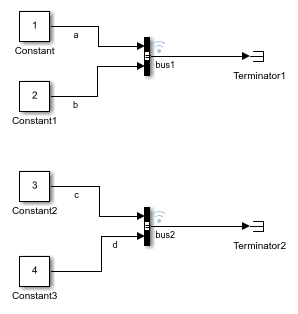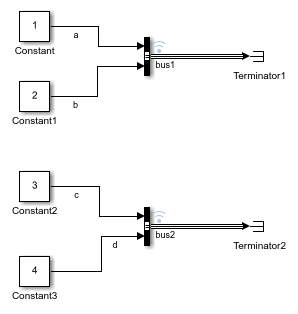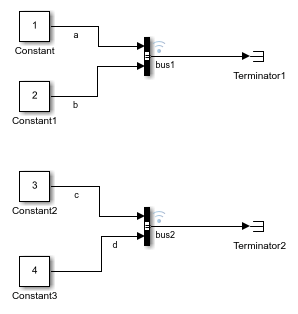Simulink.SimulationData.createStructOfTimeseries
Create structure of timeseries data to load as simulation input
for bus
Syntax
Description
tsStruct = Simulink.SimulationData.createStructOfTimeseries(busObj,tsStructIn)Simulink.Bus object, busObj, and data specified by the
structure of timeseries objects,
tsStructIn.
When the names in the input structure do not match the names specified by the bus object, the function renames the fields in the output structure to match the bus object specification. When other attributes such as data type and complexity do not match, the function returns an error.
You can use this syntax to create a simulation input that fully or partially specifies
the data for a bus. You can also use this syntax to rename the structure elements to match
the names in the Simulink.Bus object.
tsStruct = Simulink.SimulationData.createStructOfTimeseries(busObj,tsCellArray)timeseries objects with attributes that match
those specified by the Simulink.Bus object, busObj,
and data specified by the cell array of timeseries objects,
tsCellArray.
When the names in the input structure do not match the names specified by the bus object, the function renames the fields in the output structure to match the bus object specification. When other attributes such as data type and complexity do not match, the function returns an error.
You can use this syntax to create simulation input that fully or partially specifies the
data for a bus using a flat list of timeseries objects. The function maps
the timeseries objects to the hierarchy specified by the
Simulink.Bus object using a depth-first search.
tsStructArray = Simulink.SimulationData.createStructOfTimeseries(busObj,tsCellArray,dims)timeseries structures where the attributes of each
structure match those defined by the Simulink.Bus object,
busObj with the data specified by the cell array of
timeseries objects, tsCellArray. The input
dims specifies the dimensions of the array.
tsStruct = Simulink.SimulationData.createStructOfTimeseries(tsArray)timeseries objects from the bus data stored in the
Simulink.TSArray object,
tsArray. In versions before R2016a, signal logging creates
Simulink.TsArray objects to store logged bus data. Use this syntax when
you want to use bus data logged in a release before R2016a using
ModelDataLogs format as simulation input.
Examples
Input Arguments
Output Arguments
Version History
Introduced in R2013a






